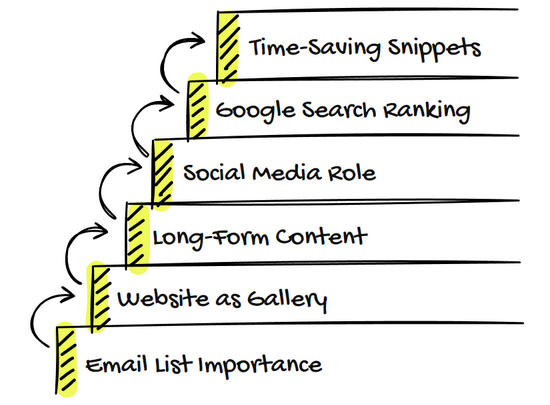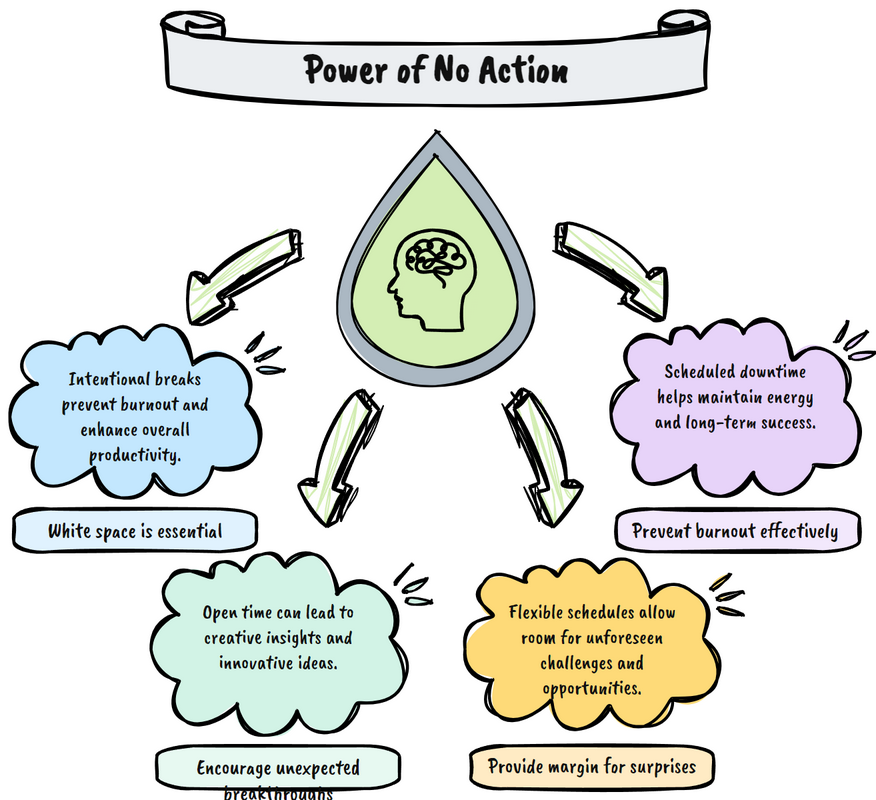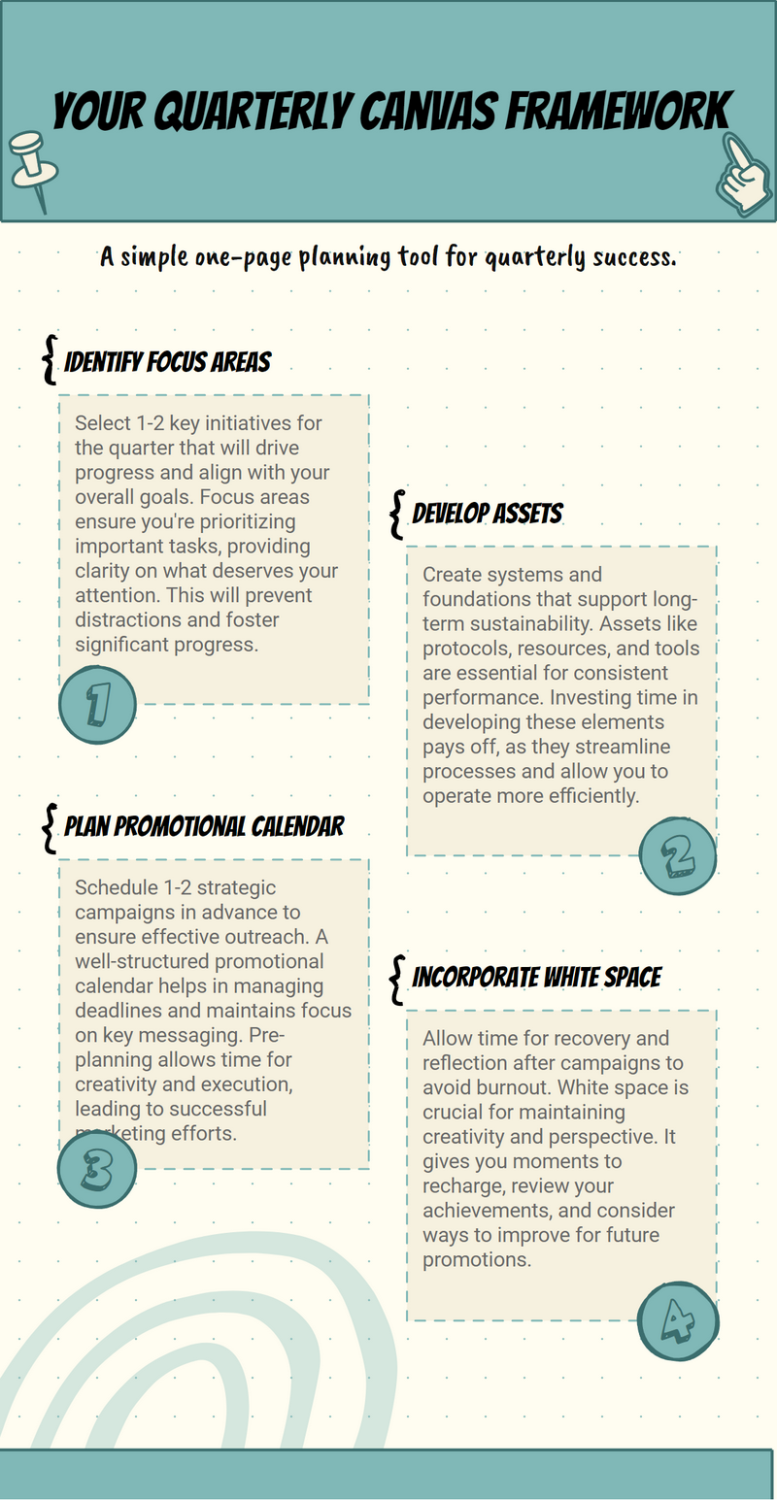


You know that feeling—staring at your day ahead with a dozen project ideas swirling in your head, half-finished work in the studio, and that nagging sense you should be doing something more strategic? You're not alone. Most artists oscillate between overwhelming ambition (planning too much and burning out) or complete avoidance (winging it and wondering why they're not making progress).
Traditional business planning fails artists because it's built for corporate environments, not creative brains. Those rigid annual plans and complex spreadsheets ignore how artists actually work—in cycles of inspiration and execution, not straight, predictable lines.
What if I told you there's a better way? A simple 25-minute framework that aligns with your creative rhythms, focuses on what actually works, and creates space for both productivity and inspiration. Who said an art business plan has to be boring?
That feeling when you wake up to six urgent emails, three social media comments asking about commissions, and your latest piece only halfway done? That's what happens when you're constantly putting out fires instead of running your art business with intention.
Studies show creative professionals experience decision fatigue at nearly twice the rate of other fields. When you're making hundreds of micro-decisions daily about colors, compositions, and client requests, your brain simply runs out of bandwidth for strategic thinking.
The art business ecosystem encourages this scattered approach: social media demands constant output, galleries want fresh work on their schedules, and clients expect immediate responses. Without a system to filter these demands, you'll keep spinning in circles.
But here's the truth: that overwhelmed feeling isn't a sign you're failing—it's a signal your approach needs adjusting.
Your biggest business strength is already in your hands. In your current practice, there are clues pointing to exactly what you should be doing more of. Most artists miss this because they're busy chasing trends or comparing themselves to others.
The 80/20 principle applies powerfully to creative businesses:
When I finally sat down and looked at my numbers, I realized that 80% of my income was coming from just 20% of my work—pet portraits. Once I focused on what was already working, my commissions increased by 30% in one quarter without working more hours.
How to find your own 20%:
Most artists overlook their existing successes because they assume what comes easily must be easy for everyone. But that's exactly why it's valuable—your natural strengths are someone else's struggle.
Here's the counterintuitive truth: doing less means earning more.
Most artists resist this idea because it feels like closing doors. What if you miss an opportunity? What if your one thing stops being popular? But focus actually creates more opportunities, not fewer.
Research shows that multitasking increases cognitive load and reduces creative output quality. When you're constantly switching between projects, you never go deep enough to do your best work.
For your quarterly plan, choose 1-3 business initiatives—maximum. And I mean realistically, not aspirationally. Ask yourself: "What 1-3 projects, if completed this quarter, would make the biggest difference to my business six months from now?"
Focus doesn't mean you can't explore creatively. It means separating your business priorities from your personal art practice. Many successful artists have revenue-generating work they promote while making different work for themselves.
Here's what happens when you limit your focus:

What if you could create something today that would still be working for your business next year? That's the power of building assets versus creating temporary content.
The difference:
The hierarchy that works best for artists:
For example, detailed process pages on your website can rank in Google searches, educate potential buyers, and give you credibility. You can use snippets from these pages for social media posts, saving hours of content creation each week.
Even creating just ONE asset per quarter makes a difference. The best time to build these things was yesterday, but the second-best time is now.
Many artists either promote constantly (burning themselves out and annoying their audience) or never promote at all. There's a middle ground—planned promotional periods where you focus your energy, followed by quieter creative periods.
Think of promotional planning like staging a theatrical performance. You wouldn't start building the set on opening night. Similarly, at the start of each quarter, mark your calendar with 1-2 promotional periods that make sense for your art. These should be 2-3 week campaigns where you focus on selling and marketing. Then, plan the 4-6 weeks before each campaign as your creation period.
Simple step-by-step template:
This backward planning prevents last-minute scrambling and builds anticipation with your audience.
Why do most artists' goals fail by February? Because we set the wrong kind of goals. Outcome goals like "make $X this quarter" or "get into a gallery" depend on factors you can't fully control.
That's why you need to pair outcome goals with process goals—the daily actions that move you forward regardless of external circumstances.
For each outcome goal, list 2-3 process goals that will help achieve it:
The key is making your process goals specific and measurable. "Paint more" isn't going to help you, but "spend 10 hours in the studio every week" gives you a clear target.
A weekly review makes all the difference. Every Friday, spend 10 minutes checking: Did you hit your process goals? If not, why? Are your outcome goals still realistic?

What if the most productive thing you could do is nothing? Intentional white space—those unscheduled blocks of time in your calendar—might be the missing piece in your quarterly plan.
This isn't laziness—it's strategic breathing room that:
When planning your quarter, block out at least one week where you commit to no client work, no promotions, just open space.
Equally important is celebration—perhaps the most overlooked strategic practice in creative businesses. During your quarterly planning, note 2-3 checkpoints where you'll pause and assess progress. These become natural celebration points.
Celebration trains your brain to notice what's working. When you consistently acknowledge successes, you start seeing more opportunities to replicate them.

Your quarterly plan doesn't need to be complicated. Use this simple "Quarterly Canvas" framework—a single page divided into four sections:
Keep it visible and spend 10 minutes with it every Monday morning, asking: "What needs my attention this week?"
This approach isn't about locking yourself into rigid commitments—it's about creating guardrails so you don't waste energy constantly deciding what to do next.
Block 25 minutes this week to start your quarterly plan. Identify what's already working in your business and choose 1-2 focus areas for the next three months.
Remember, this isn't about overhauling everything overnight or working harder. It's about working with intention. The artists seeing real success aren't the ones working hardest—they're the ones working with purpose.
Your art business can feel expansive rather than exhausting—if you build it that way on purpose.




© 2024 The Artist's Guide to Business. All rights reserved.
Privacy Policy
Terms of Service
Cookies Settings
